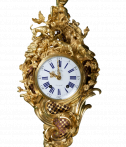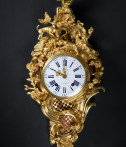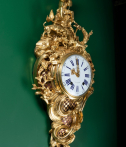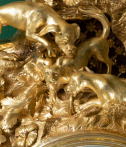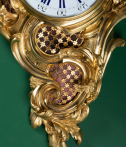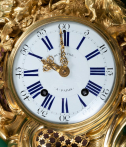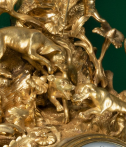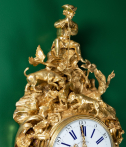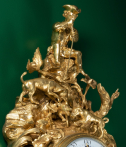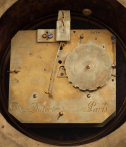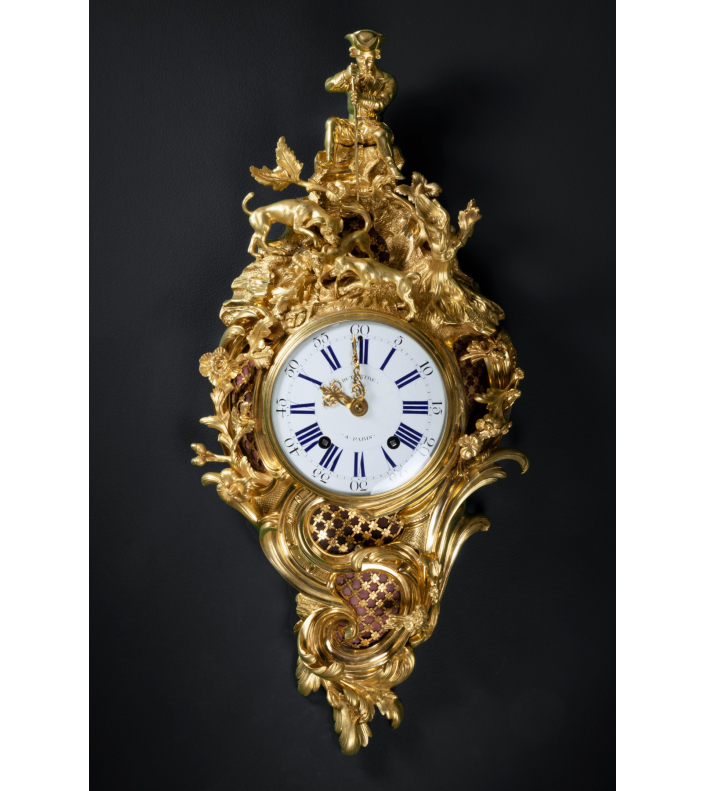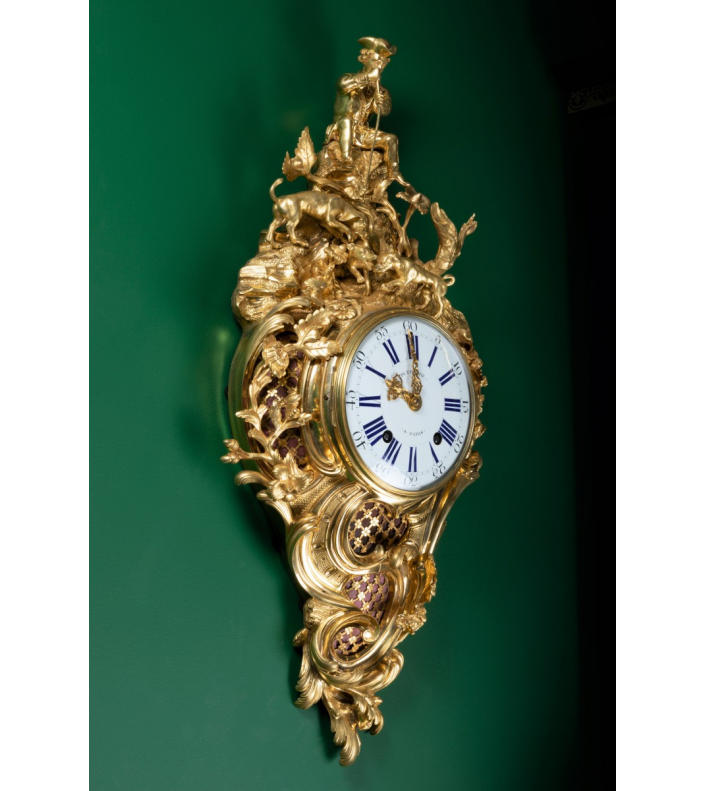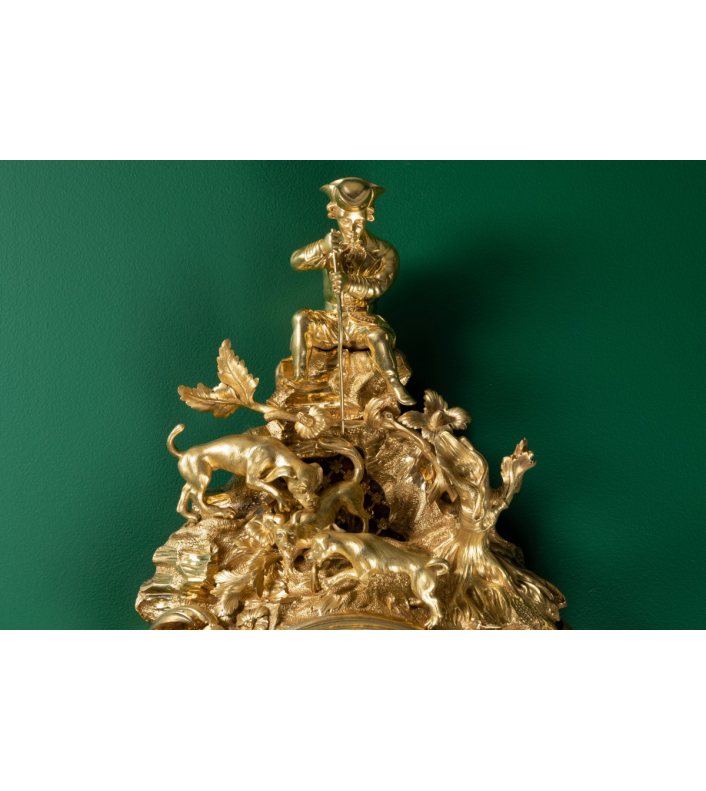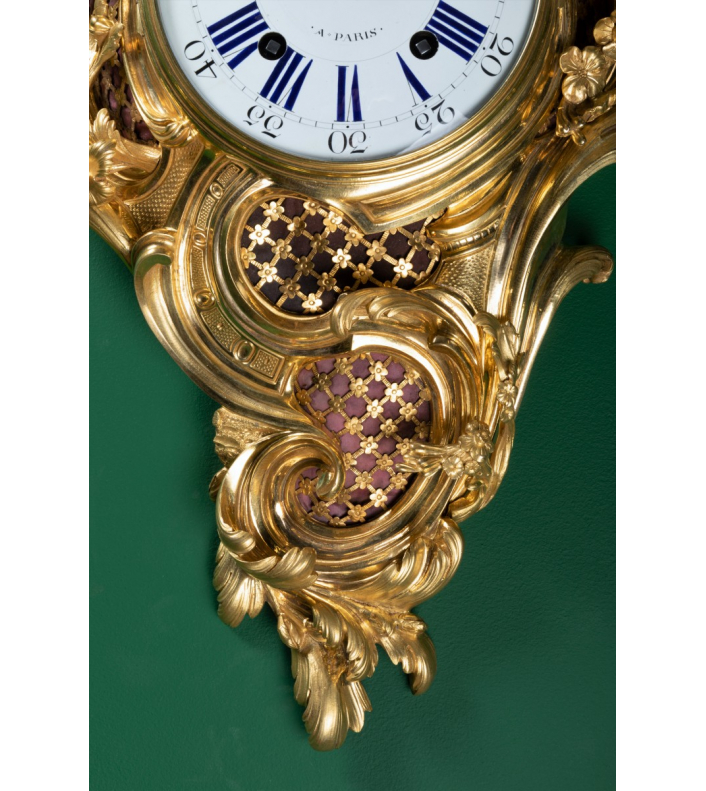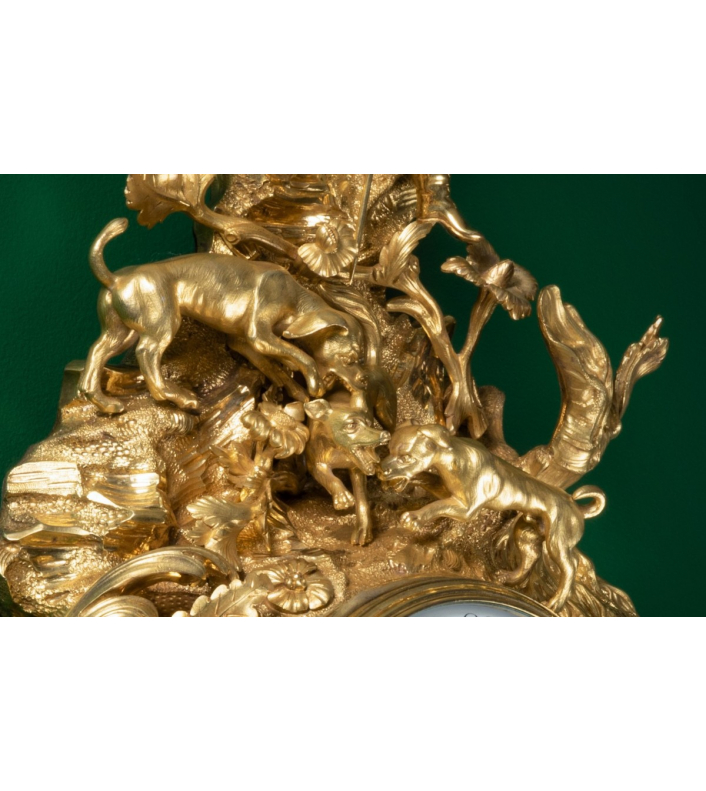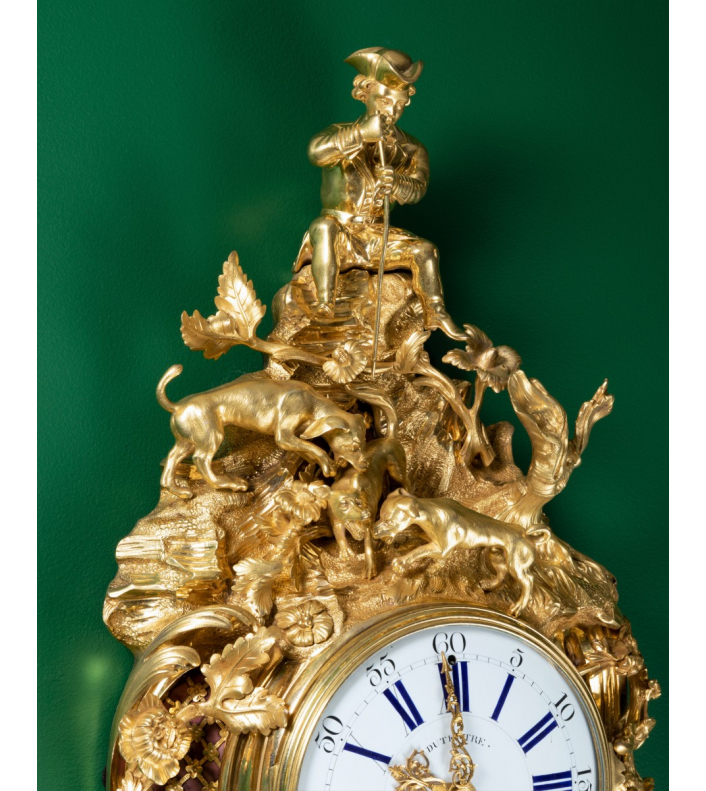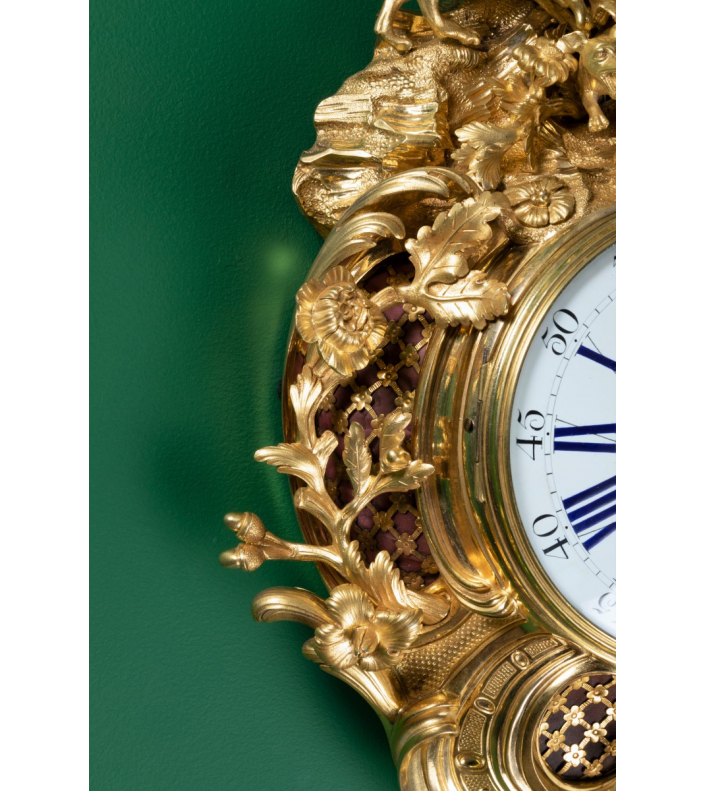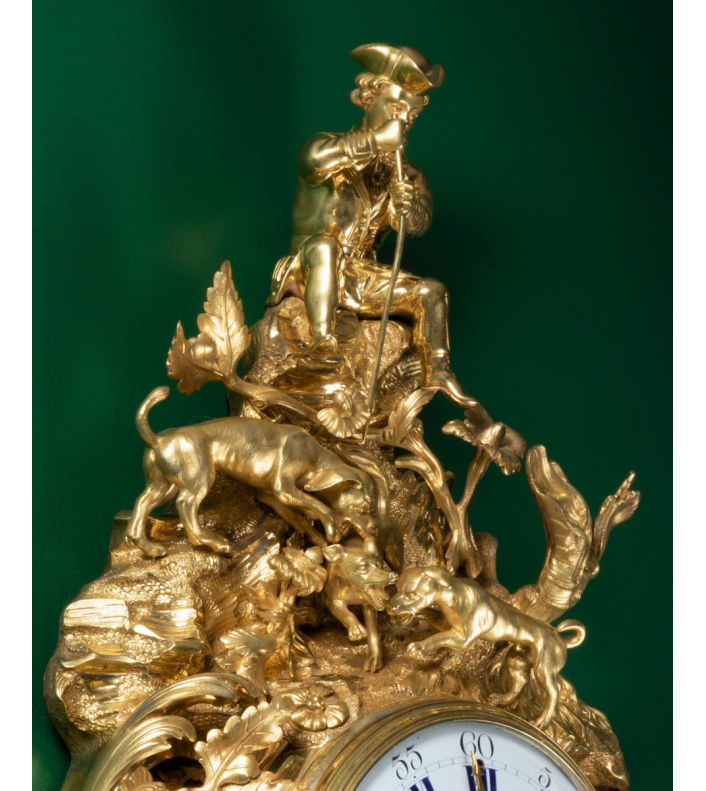Cartel with "the fox hunt" in gilt bronze, case attributed to Jean-Joseph de Saint Germain, dial and movement signed Jean Baptiste Dutertre.
An example of the sumptuousness of the decorative arts under the reign of Louis XV, our chiseled and gilt bronze cartel clock is attributed to the famous bronzier Jean-Joseph de Saint-Germain. The exceptional quality of the carving and the virtuosity of execution perfectly reflect the expertise of this artist.
At the top, a real fox hunt takes place. The hunter seated on a rock is about to pierce the fox attacked by his two dogs with a spike.
The panic-stricken animal with its mouth wide open gazes at the viewer in the face of imminent danger.
The vegetal environment is particularly accentuated by the presence of oak branches, foliage and acorns. This naturalistic treatment associated with figures quivering with life is one of the characteristics of the art of J.-J. de Saint Germain.
The circular dial is surrounded by flowery branches and foliage, the decoration which continues in the lower part around volutes enclosing flowery trellises and ends with a rolled acanthus leaf.
The white enamel dial is signed "Dutertre à Paris", it indicates the hours in Roman numerals and the minutes in slices of five in Arabic numerals by two pierced and gilded brass hands; the plate is also signed. The movement strikes for hours and a half hours.
The subject of the cartel refers to a theme dear to the French high nobility. Hunt, after women, is probably King Louis XV's greatest passion. Celebrated by Jean Baptiste Oudry, animal painter of the court, the different hunts are immortalized in his paintings and drawings. It is from this iconographic repertoire that our bronzier will draw to execute the fox hunting scene.
Hunting themes, unlike exotic animals, are however very rare in watchmaking. Animals associated with hunting often appear on bronze objects such as andirons or wall lights (eg "stag" and "wild boar" wall lights by J.-J. de Saint Germain).
However, we can cite a "stag hunt" clock also attributed to Saint Germain, whose figures are very similar (Artcurial sale, Paris, 11/26/2018).
Our cartel, a true luxury object, thanks to its very elaborate design and the complexity of the decoration is part of a production of excellence and was undoubtedly intended for a fervent amateur of hunt, eagar to embellish his interior with the symbols of his passion.
Paris, Louis XV period.
Gilt and chiseled bronze case, attributed to Jean-Joseph de Saint-Germain
Movement signed Dutertre in Paris, for Jean Baptiste Dutertre
Size: h. 77 cm, w. 41 cm
Jean-Baptiste II Dutertre (? -1773),
Appointed Master Watchmaker in 1735 in Paris
After taking over his father's workshop, he acquired great renown among his contemporaries by distinguishing himself by the production of large timepieces. He joined forces with the best bronziers of the time such as Saint-Germain and Osmond to seduce a rich aristocratic clientele such as the Duke of Penthièvre or the Marquis de Marigny, Lepeletier de Mortefontaine, all great watch enthusiasts.
Jean-Joseph de Saint-Germain (1719-1791)
Received Master Founder-Chisel in 1748
One of the most famous foundry chasers of the mid-18th century.
Specialized in the production of clock cases entirely in gilded bronze.
His father, Joseph de Saint-Germain (died after 1765), worked as a cabinetmaker at the Faubourg Saint-Antoine and specialized in making clock cases. Through his mother, Jean-Joseph de Saint-Germain was allied with the Prieur family, a powerful dynasty of chasers, the most famous of which was his contemporary, Jean-Louis Prieur (born around 1725). He obtained a master's degree in 1746 as a master foundry in earth and sand. In 1765 he was elected juror, high office of his corporation which he held for several years.
Saint-Germain supplies, directly or through watchmakers, gilders or merchants such as Lazare Duvaux, a very high-ranking clientele (the Duchess of Orleans, the Dukes of Tallard and Pralins, the Marquis de Pange and d'Eaubonne, or one of the most famous collectors of the 18th century, the financier Blondel de Gagny. The Royal Garde-Meuble was also a client of Saint-Germain. His trade was not limited to the kingdom. The Duchess of Parma, Kings Adolphe-Frédéric of Sweden and August III of Poland, the Landgrave of Hesse-Kassel, the electors of Bavaria and Trier were among his European clientele. Joseph de Saint-Germain was to follow during his long career the aesthetic evolutions which marked the reign of Louis XV, from the "picturesque taste" or rococo to the purest neoclassicism. Among the most original pieces of his production are mods. els where the dial is supported by a figure of animal, lion, rhinoceros, elephant, horse, and more rarely boar, real pieces of sculpture which made its reputation.


